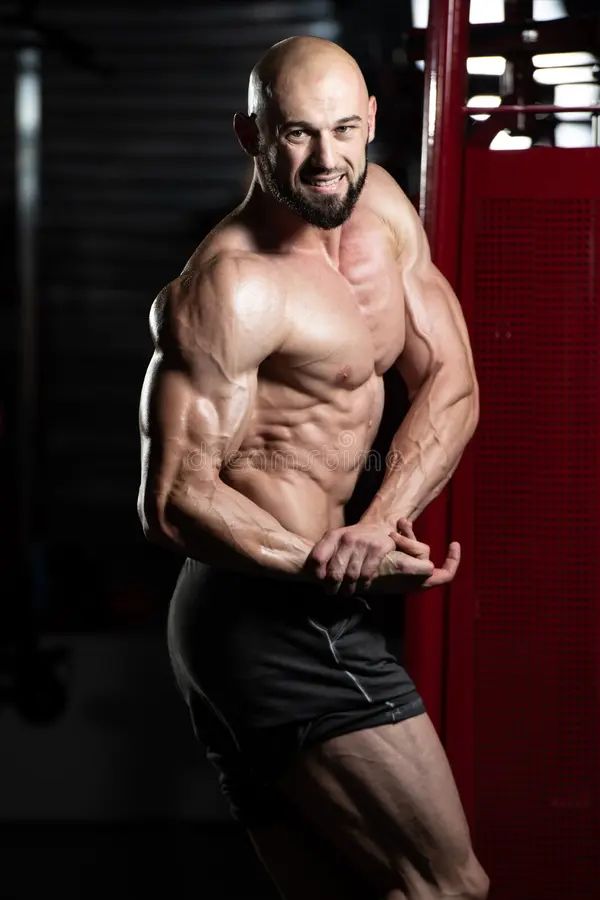
A well-developed chest is undeniably a hallmark of a balanced and powerful physique, and it’s an area that captures a great deal of attention, whether you’re reflecting on your own progress or just going about your day. For men over 40, building a huge, strong chest isn’t just about aesthetics; it’s vital for overall strength, health, and maintaining functional capabilities for activities like playing sports, lifting groceries, or simply picking up your kids with ease. The chest muscles, primarily the pectoralis major and minor, are central to many pushing movements and contribute significantly to good posture and enhanced athletic performance.
Many exercisers, however, fall into the trap of a narrow approach to chest training, often focusing almost exclusively on the barbell bench press. While this classic movement is undeniably effective and a cornerstone of any chest routine, relying on a single exercise pattern can lead to imbalanced development and, over time, potential problems. The key to sustained growth and strength, especially as we age, lies in smart training, embracing variety, and targeting the distinct regions of the pectoral muscles with precision.
In this comprehensive guide, we’re going to dive deep into the science and practical application of building a formidable chest for men over 40. We’ll explore expert-backed strategies, break down essential exercises, and equip you with the knowledge to sculpt a powerful, well-defined chest while prioritizing joint health and long-term progress. Get ready to transform your approach and unleash your chest’s full potential!

1. **Barbell Bench Press**The barbell bench press stands as the undisputed king of chest exercises, a foundational movement revered for its unparalleled ability to create mechanical tension across the entire pectoral region. It’s the exercise that allows for the heaviest loading, driving significant strength development and muscle growth through the recruitment of powerful fast-twitch muscle fibers. For men over 40, mastering this compound lift is crucial, but it must be executed with impeccable form to maximize benefits and safeguard joint health.
Implementing the barbell bench press effectively involves more than just pushing heavy weight. The “Ultimate Chest Workout Plan” recommends 4 working sets of 6-8 repetitions, following 2-3 progressive warm-up sets, with rest periods of 2-3 minutes between working sets. Proper technique dictates maintaining retracted scapulae – shoulder blades pulled back and down – throughout the movement, coupled with a slight arch in the lower back. This positioning optimizes shoulder health and engagement of the chest muscles.
It’s also essential to control the eccentric phase, which is the lowering of the weight, as this creates additional tension and stimulates further muscle growth. The grip width should be chosen carefully; for most trainees, it should position the forearms vertically at the bottom of the movement, typically slightly wider than shoulder width. However, individual anatomical differences may necessitate adjustments, so always listen to your body and prioritize comfort and stability.
IFBB Pro Bodybuilder Rob Youells, who at 42 is himself a testament to sustained fitness, places maximum emphasis on a workout’s first exercise, often doing six to eight sets, then a series of dropsets. While his approach is very high volume, it underscores the importance of giving your primary compound movement the respect and energy it deserves at the start of your training session.
Read more about: Mastering Midlife Fitness: The Essential Exercises Men Over 50 Need to Stay Strong, Mobile, and Injury-Free

2. **Incline Dumbbell Press**Following the raw power of the flat bench, the incline dumbbell press specifically targets the upper chest region, a common stubborn area for many trainees. The clavicular head of the pectoralis major, which forms the upper chest, responds best to incline pressing and flying movements. Expert recommendations suggest a bench angle between 30-45 degrees to provide optimal upper chest activation without placing undue stress on the front deltoids.
The “Ultimate Chest Workout Plan” advises 3 working sets of 8-10 repetitions with 90-120 seconds rest between sets. Using dumbbells offers significant advantages over a barbell for incline work. It allows for a greater range of motion, creating a more complete stretch at the bottom position and a more intense contraction at the top. Furthermore, the independent movement of each arm helps to prevent strength imbalances between the left and right sides of your chest.
When performing this exercise, lower the dumbbells with your elbows at approximately 45-degree angles from your body, focusing intently on feeling the upper chest contract during the pressing phase. As athlete performance and development specialist Curtis Shannon, C.S.C.S., notes, “The mechanical load and position on the incline bench press provides a greater challenge than the flat or decline bench. This will essentially allow you to get a greater adaptational response with less weight than with the flat benchpress.”
Shannon also personally feels “more muscle in the chest and less stress in the shoulder joint when I perform this exercise, in comparison to the flat bench.” This insight is particularly valuable for men over 40, who often need to prioritize joint health and movement quality to sustain their training long-term. Integrating this exercise is a fantastic way to add variety to your upper body push routine and ensure comprehensive chest development.
Read more about: Unlocking Peak Performance: A Deep Dive into Mark Wahlberg’s Ultimate Home Gym & How You Can Build Your Own Fitness Sanctuary
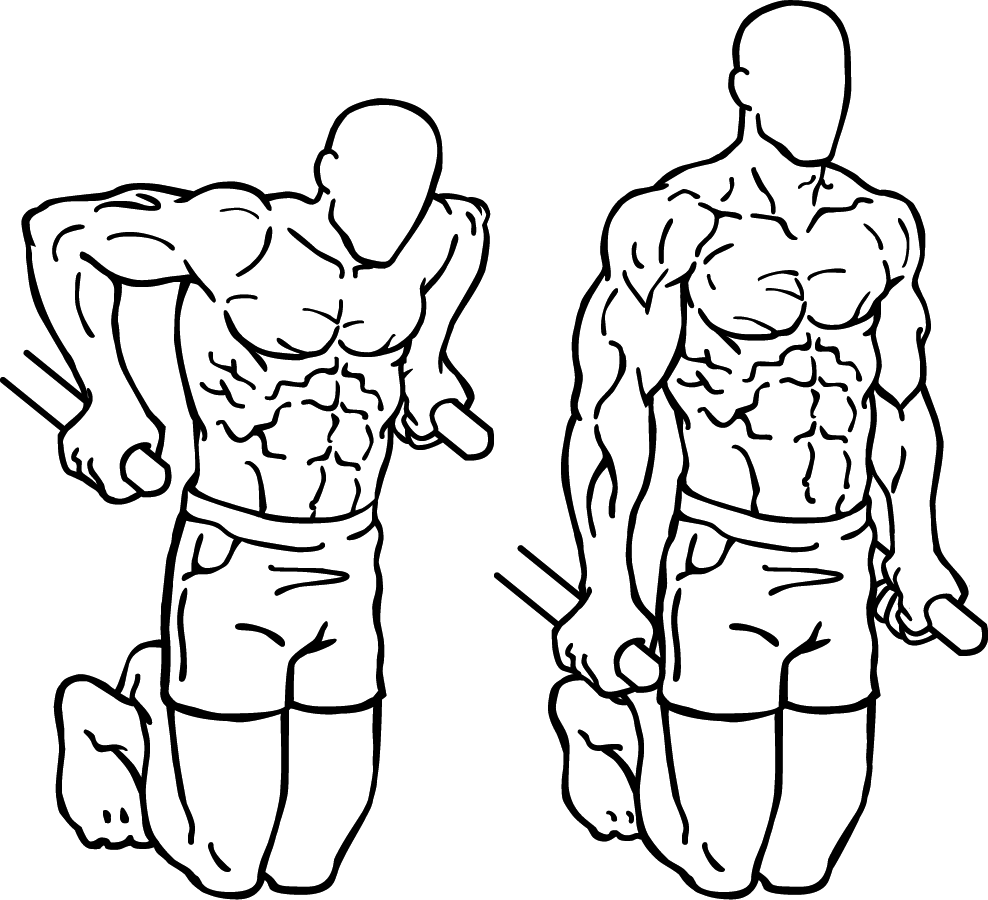
3. **Chest Dips**Chest dips offer a powerful bodyweight exercise that shifts emphasis to the lower chest region, providing a crucial counterpoint to the externally loaded pressing movements we’ve already discussed. While often perceived as purely a triceps exercise, proper form can make dips a phenomenal lower chest developer. They also build functional strength that directly translates to numerous athletic activities and daily life tasks.
To maximize lower chest engagement, it’s essential to lean the torso forward approximately 15-20 degrees during the movement, while still maintaining slight scapular retraction. The “Ultimate Chest Workout Plan” suggests 3 sets of 10-12 repetitions with 90 seconds rest between sets. A key aspect of effective dipping is creating a deep stretch at the bottom position without allowing for excessive shoulder depression, which can put unnecessary strain on the shoulder joint.
For those who find bodyweight dips challenging, a weight assistance machine can be used to complete the target repetitions, allowing for gradual strength building. Conversely, advanced trainees can add external loading, such as a dip belt with plates, to continue progressing and challenge their strength further. The goal is to safely achieve the prescribed rep range while maintaining proper forward lean and deep stretch.
A specific technique to enhance chest muscle tension, as highlighted by medically reviewed advice, is to “let your elbows flare out on the dip.” This subtle modification can increase the stretch and contraction in the pectoral muscles, particularly the lower fibers, making it a more effective chest-focused movement. Remember to lower slowly until your elbows are at 90-degree angles, hold for 3 seconds, and then rise back up, ensuring controlled and deliberate execution.
Read more about: The Future is Flavorful: 14 Cutting-Edge Food Trends Set to Dominate Your Plate in 2025
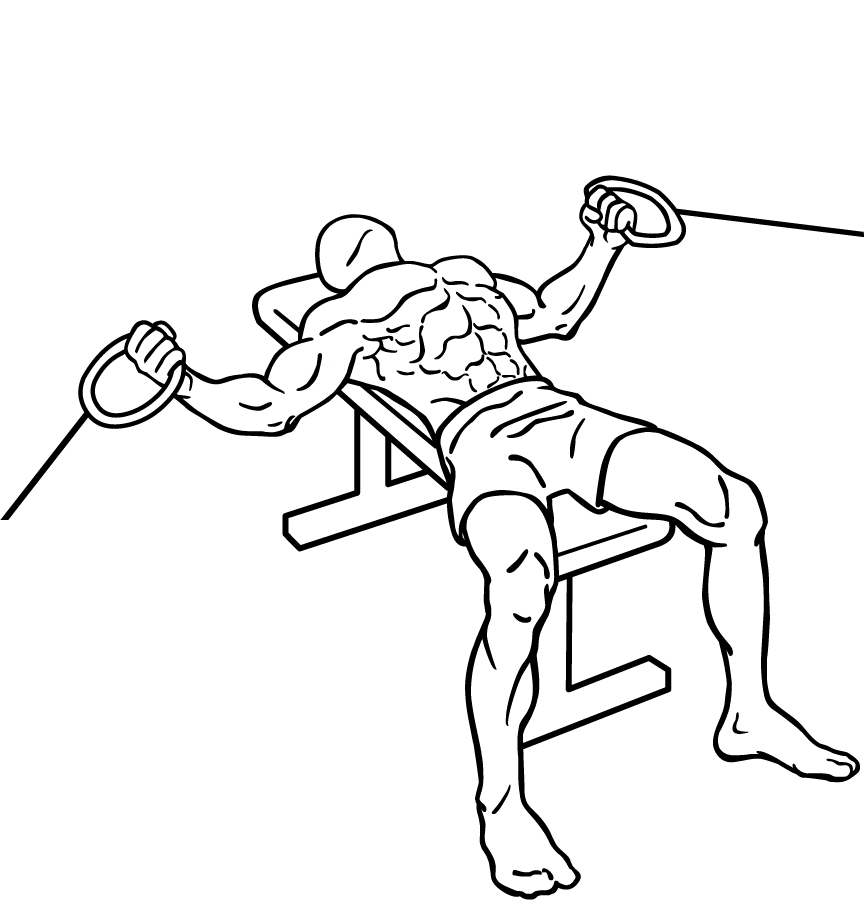
4. **Cable Flyes**Transitioning from heavy compound movements, cable flyes provide a unique stimulus by creating consistent tension throughout the horizontal adduction pattern, directly targeting the chest muscles with minimal triceps involvement. Unlike dumbbells, where gravity lessens tension at the top of the movement, the pulley system of cables maintains resistance at the fully contracted position, maximizing the “squeeze” and overall time under tension.
The “Ultimate Chest Workout Plan” recommends performing 3 sets of 12-15 repetitions with 60-90 seconds rest between sets. To set up for this exercise, position yourself in a neutral stance between cable columns, with the handles set at mid-chest height. It’s important to maintain a slight forward lean from the hips to optimize chest engagement and keep a slight elbow flexion – approximately 10-15 degrees – throughout the entire range of motion.
The focus during cable flyes should be entirely on the contraction and stretch in the chest muscles. As you bring your hands together in front of you, imagine trying to touch your biceps to your chest, really squeezing those pectoral fibers. Then, as you slowly release back to the starting position, allow a deep, controlled stretch across the chest, without letting the weights pull your arms too far back, which could strain the shoulders.
Another variation, the Bent-Forward Cable Crossover, also emphasizes this movement pattern. You start in a staggered stance, gripping each handle with elbows slightly bent and handles lower than the shoulders. Leaning forward, you bring your hands together in front of you, hold for 3 seconds, then release. Both variations effectively isolate the chest, providing that crucial “pump” and definition that complements the mass-building of presses.
Read more about: Beyond the Hype: Fitness Trainers Reveal the Secrets to Mark Wahlberg’s Redefined 2025 Workout Schedule

5. **Pec Deck Machine**For maximum isolation and a truly intense contraction, especially in the inner chest region, the pec deck machine is an invaluable tool in your chest-building arsenal. Its guided movement path eliminates the need for stabilization, allowing you to focus entirely on squeezing and contracting the target muscles without worrying about balance or form deviations, making it excellent for hitting the chest even when fatigued.
The “Ultimate Chest Workout Plan” suggests performing 3 sets of 12-15 repetitions with 60 seconds rest between sets, recommending the final set as a drop set. For a drop set, after reaching failure, you immediately reduce the weight by approximately 30% and continue for as many repetitions as possible. This advanced technique helps to push past normal failure points, creating significant metabolic stress and cellular signaling for growth.
When using the pec deck, sit with your feet shoulder-width apart on the ground and your back firmly against the back pad. Place your arms on the arm pads, ensuring your elbows are at 90-degree angles. Throughout the movement, maintain slight scapular retraction – shoulder blades pulled back – to keep tension on the chest. Slowly push the arm pads towards each other, hold for a count, and then slowly release back to the starting position, controlling the eccentric phase.
The fixed movement path of the pec deck machine ensures optimal positioning throughout the entire range of motion, allowing for a concentrated squeeze at peak contraction. This controlled environment is particularly beneficial for men over 40 who want to safely maximize muscle fiber recruitment and add definition without excessive joint strain that might come from free weights when stabilization becomes a challenge. It’s a fantastic way to finish off your chest workout with a powerful, isolated pump.
Read more about: Remember These Days? 14 Iconic Manual Transmissions That Vanished Or Are Fading From Our Car Options

6. **Dumbbell Chest Fly**The dumbbell chest fly is an absolute go-to exercise for creating deep tension and stretch through the pectoral muscles, distinguishing itself from pressing movements by focusing purely on the horizontal adduction function of the chest. This exercise is all about the squeeze, meaning you’ll likely use less weight than you might anticipate. The goal is not to “flap your arms like a bird,” but rather to control the movement and emphasize the contraction.
To perform it correctly, lie on a flat bench gripping dumbbells in each hand. Press the weights up above your chest, keeping them from touching, with your pinkies turned slightly inward. It’s crucial to maintain full body tension on the bench, keeping your feet flat on the floor and your core engaged. This stability ensures that the tension remains primarily on your chest muscles and not on your stabilizing muscles.
Lower your arms down by moving only at your shoulders, maintaining a slight bend in your elbows. This slight elbow bend is key to protecting your elbow joints and keeping the focus on the chest. Only go as deep as your shoulder mobility comfortably allows, feeling a strong stretch across your chest. Pushing too far can compromise shoulder integrity, which is especially important for men over 40 to avoid.
Then, squeeze your shoulder blades together to initiate the movement, raising the weight back up to the starting position. As the dumbbells come back up, emphasize the squeeze in your chest at the top, almost as if you’re trying to bring your inner pectorals together. The recommended sets and reps are 3 sets of 10 to 12 reps, ensuring adequate volume for hypertrophy and that satisfying muscle pump.
Read more about: Mastering Midlife Fitness: The Essential Exercises Men Over 50 Need to Stay Strong, Mobile, and Injury-Free
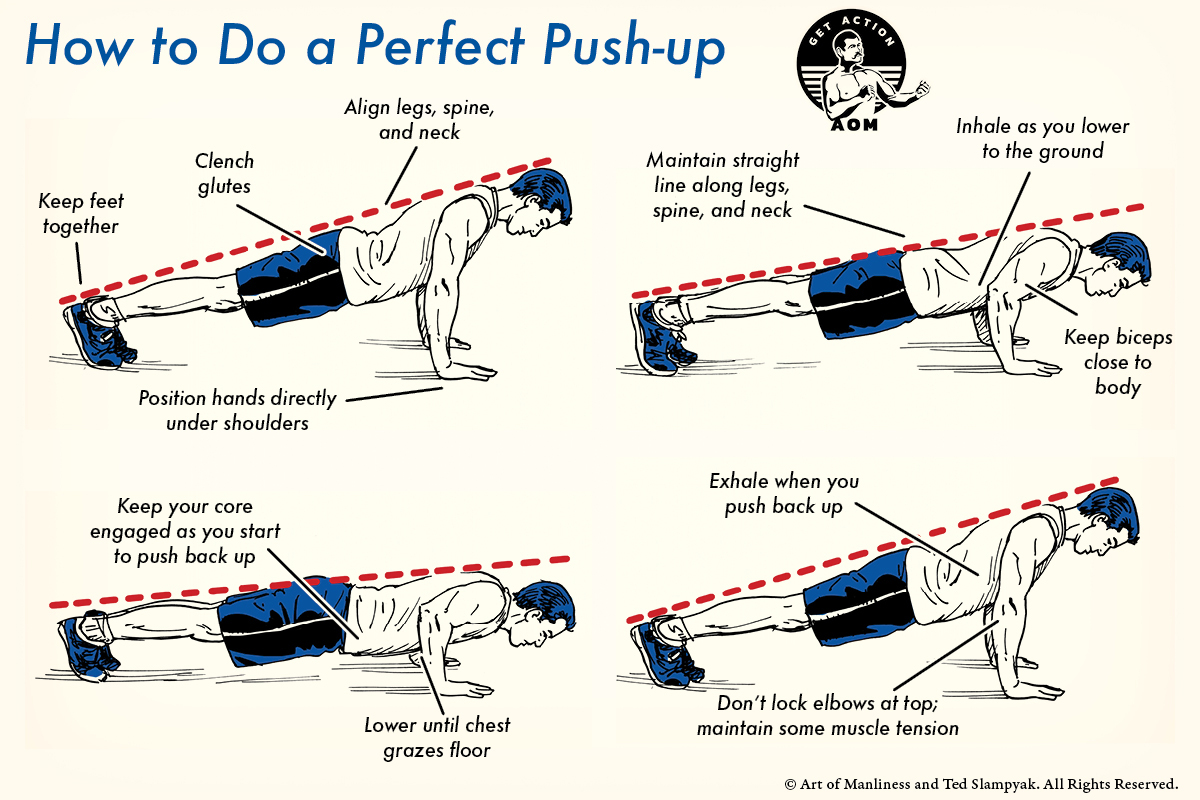
7. **Pushup**The humble pushup, a fundamental bodyweight exercise, is often overlooked in favor of heavier loaded movements, but it remains an indispensable tool for building a well-rounded and strong chest. You might have done millions of them already, but mastering the proper form is essential for maximizing its benefits and ensuring continuous development. It truly is one of the most basic yet effective exercises to train your chest, and its versatility allows for progressive challenges.
Start by getting into a high plank position, with your hands placed directly beneath your shoulders and your feet close together. It’s paramount to keep a straight spine, with your core and glutes squeezed tightly throughout the movement. Your gaze should be directed down to keep your neck in a neutral position, avoiding any unnecessary strain. This solid plank foundation ensures efficient transfer of force to the chest.
As you lower your chest towards the floor, keep your elbows close to your torso, resisting the urge to let them flare out excessively. This elbow positioning not only maximizes chest activation but also helps to protect your shoulder joints. Drop slowly until your nose almost touches the ground, or as low as your mobility allows without losing form, creating a good stretch in the pectoral muscles.
Then, push straight off the ground, driving all the way up to the top position with your elbows straight, fully contracting the chest. For those finding the standard push-up too challenging, you can modify it by staying on your knees. Conversely, for advanced trainees, variations like suspended push-ups using gymnastics rings or stability ball push-ups can significantly increase the difficulty by adding instability and range of motion, ensuring continuous challenge for 3 to 4 sets of 12 to 15 reps.
With the foundational movements firmly established, it’s time to expand your chest training arsenal with diverse variations and advanced techniques. This next set of exercises will help stimulate comprehensive growth, challenge your muscles in new ways, and ensure no part of your formidable chest is left underdeveloped. Get ready to sculpt that impressive physique you’ve been working towards!
Read more about: Mastering Midlife Fitness: The Essential Exercises Men Over 50 Need to Stay Strong, Mobile, and Injury-Free
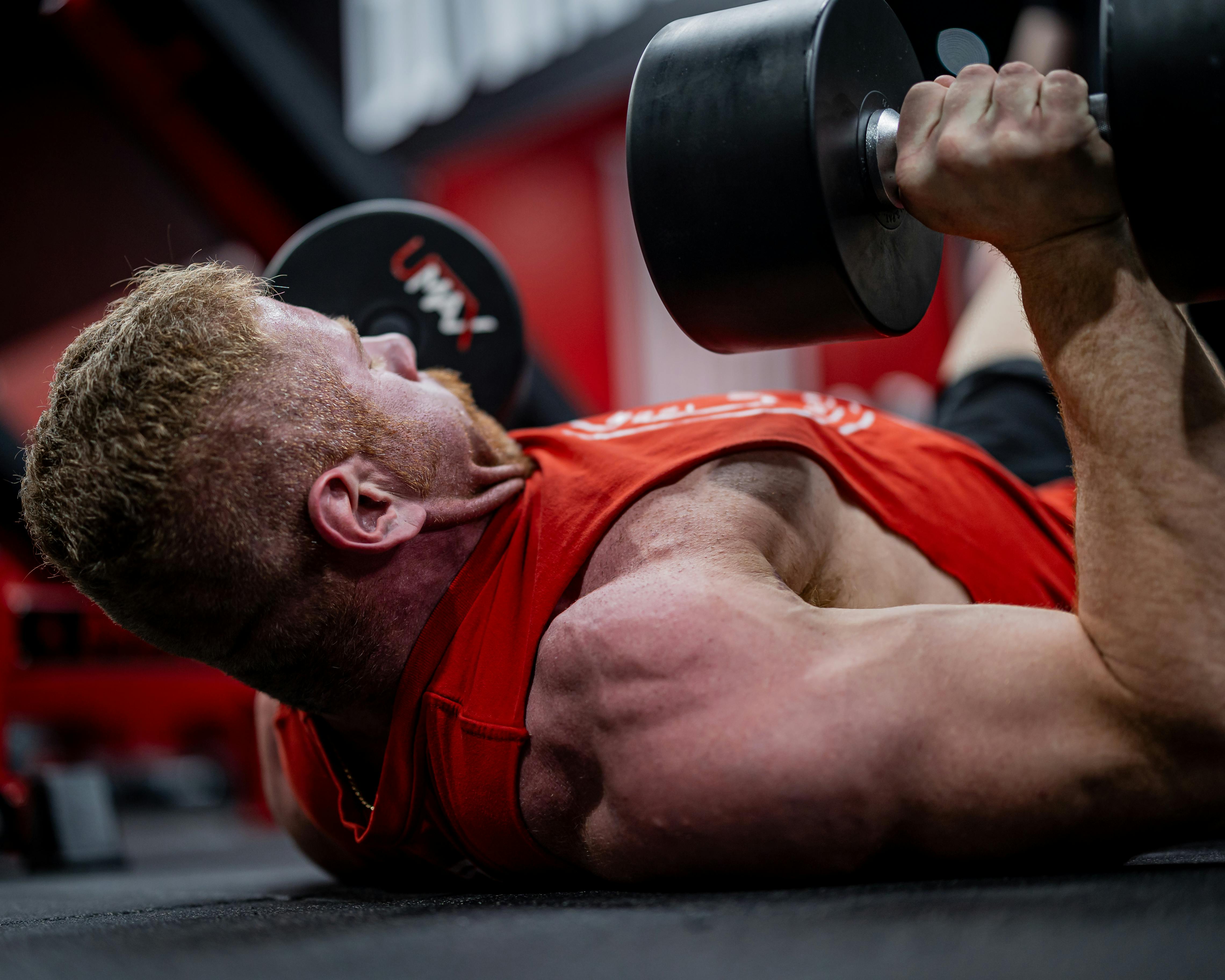
8. **Dumbbell Floor Press**No bench available? No problem at all! The dumbbell floor press is a fantastic alternative that allows you to continue building up your chest, even when you’re limited on equipment or training at home. This exercise offers a unique advantage by inherently limiting your range of motion at the bottom, which can be particularly shoulder-safe, making it an excellent choice for men over 40 who need to be mindful of joint health.
To execute this effectively, simply lie back on the floor, gripping a pair of dumbbells tightly in each hand. Keep your feet flat on the floor, actively driving through your heels and squeezing your glutes to maintain stability. Crucially, keep your elbows at approximately a 45-degree angle relative to your torso as you lower the weights, which is key for keeping your shoulders safe and preventing undue strain.
Press the dumbbells straight up towards the ceiling, focusing on a strong squeeze in your chest at the top of the movement. Then, lower them back down with control, allowing your elbows to briefly rest on the ground. This pause helps ensure you’re maintaining proper form and not bouncing the weight. Aim for 3 sets of 8 to 10 repetitions to truly feel that chest pump.
Read more about: Mastering Midlife Fitness: The Essential Exercises Men Over 50 Need to Stay Strong, Mobile, and Injury-Free

9. **Band Chest Fly**For a truly versatile and effective addition to your chest routine, look no further than the band chest fly. This exercise serves beautifully as a dynamic warm-up to prime your muscles before a heavier chest workout, or as a killer burnout finisher to exhaust your pecs and stimulate growth. Its accessibility is also a huge plus, as it can easily be done at home with minimal equipment.
Athlete performance and development specialist Curtis Shannon, C.S.C.S., highlights its remarkable benefits, stating, “This exercise can be an extremely effective single or double arm exercise increasing hypertrophy and muscular endurance (providing that pump) without putting the amount of stress on the shoulder joints that a chest fly with a dumbbell would.” This emphasis on reduced joint stress is paramount for men over 40, ensuring sustainable training.
Shannon also appreciates its programmatic flexibility: “I like programming it as an accessory, warmup/priming, filler, or finisher lift. It can also be programmed with a global lower and upper body pull exercise, such as a deadlift or bent over row. Or simply use it as a ‘beach day’ workout exercise that focuses on high volume for that ‘pump’.” This speaks to its incredible utility in various training contexts, from building mass to enhancing definition.
To perform this movement, attach two resistance bands to a stable base, such as a power rack or a sturdy pole. Grab the ends of the bands in each hand, wrapping them around your palms for a secure grip. Stand in a staggered stance in the middle of the station, ensuring your arms are outstretched but with a slight, comfortable bend in your elbows. Lean forward slightly at your hips, making sure to avoid any rounding in your back, to optimize chest engagement.
Without changing the slight bend in your arms, bring your hands together in a controlled arcing motion in front of your chest, really focusing on squeezing those pectoral muscles. Slowly reverse the movement, maintaining control of the bands as they pull your arms back to the starting position. Aim for 3 to 4 sets of 12 to 15 repetitions to maximize hypertrophy and endurance, giving you that satisfying “pump.”
Read more about: Wrestling Legends Gone Too Soon: Tragic Early Departures from the Squared Circle
10. **T-Bench Glute Bridge Fly**Here’s an inventive exercise that cleverly blends elements of the bench fly with the stability focus of a floor press, creating a shoulder-safe way to hit your chest muscles while simultaneously engaging your core and glutes. The T-Bench Glute Bridge Fly demands that you hold a challenging position, which offers additional functional strength benefits beyond just chest development.
Begin by sitting on the edge of a horizontally oriented weight bench, placing a set of dumbbells on your lap. As you lie back, kick the weights into position and shift your shoulder blades onto the bench. Crucially, drive your shoulders into the bench to “set” them firmly, then squeeze your glutes and abs vigorously to form a stable bridge shape with your feet planted on the ground. This engaged glute bridge is key to the exercise’s effectiveness and its core-strengthening component.
From this stable position, open your arms to lower your elbows down to the bench, forming the distinct shape of the letter ‘T’ with your body. Focus intently on the eccentric portion of the movement, taking a deliberate 3 to 4 seconds to lower the weights, which significantly increases time under tension and promotes muscle growth. Then, squeeze your chest powerfully to fly the weights back up to the starting position.
This exercise not only provides a deep stretch and contraction for your chest but also builds stability and strength in your posterior chain. Aim for 3 sets of 10 to 12 repetitions. The combined challenge to your chest, glutes, and abs makes it a fantastic multi-faceted movement for a well-rounded physique.
Read more about: Optimizing Health and Longevity: Essential Exercises for Adults Over 50

11. **Machine Chest Press**For anyone who has stepped foot into a commercial gym, the machine chest press is a familiar sight. And contrary to some old-school beliefs, machines can be incredibly beneficial for your gains, especially when you want to push your muscles to fatigue without the need for a spotter. Learning the proper form for this machine is definitely time well spent, as it provides a safe and effective way to build chest strength and size.
Proper setup is key. Adjust your seat so that the handles are positioned approximately two inches below your shoulders. This ensures optimal alignment for chest activation and minimizes stress on the shoulder joints. As you sit, keep your shoulder blades tightly squeezed against the back pad, and ensure your glutes and lower back are firmly wedged into the pad as well. This creates a stable base from which to press.
During the movement, drive your elbows down and keep them tight to your body, while also pushing into the floor with your legs. This leg drive helps transfer power efficiently into the press, allowing for greater force production. Press the handles forward smoothly, focusing on a strong, deliberate squeeze at the top of the movement to maximize pectoral contraction. Then, control the weight as it returns to the starting position. Aim for 3 sets of 12 to 15 repetitions, allowing you to safely push towards muscular fatigue.
Read more about: The ’70s Puzzle: 12 Lost Giants – Why These American and Global ‘Trucks’ Vanished from the Roads of History
12. **Deficit Pushup**You might be a pushup pro, but if you want to truly level up this fundamental exercise and unlock greater strength and muscle gains, it’s time to introduce the deficit pushup. By simply adding a deficit – elevating your hands on a raised surface – you significantly increase the range of motion, forcing your chest muscles to work harder through a deeper stretch and more intense contraction.
To perform this advanced variation, place your hands on two sturdy raised surfaces, such as dumbbells or pushup handles, positioned slightly wider than shoulder-width apart. Maintain a rigid plank position by keeping your abs and glutes tightly squeezed throughout the exercise. This strong core engagement is vital for stability and efficient force transfer, preventing your body from sagging.
As you lower yourself down, squeeze your shoulder blades together and keep your core tight. Allow your chest to descend below the level of the platforms, aiming to get within an inch from the floor, or as deep as your body comfortably allows without compromising form. This increased depth is where the magic happens, creating a profound stretch in your pectoral muscles. Pause momentarily at the bottom, really feeling that stretch.
Then, press your hands powerfully down into the platforms to drive yourself back up to the starting position, ensuring those shoulder blades remain squeezed and your mid-back muscles are nice and relaxed throughout the ascent. This full range of motion will lead to superior hypertrophy and strength development. Target 3 sets of 6 to 8 repetitions, as the increased difficulty warrants a slightly lower rep range.

13. **Half-Kneeling Chest Press**For a fresh take on chest pressing that simultaneously challenges your core stability and addresses real-world movement patterns, integrate the halneeling chest press into your routine. This exercise forces you to hone your core strength while working from an off-balance position, mimicking the asymmetrical demands often faced in daily life or sports.
As Men’s Health fitness director Ebenezer Samuel, C.S.C.S., aptly puts it, “In the real world, we don’t get to work symmetrically. We’re kind of off balance a little bit.” He adds, “This puts you in an off-balance position,” underscoring the functional benefits of this unique movement. It’s an excellent way to bridge the gap between gym strength and practical, everyday capabilities.
To set up, kneel with one leg forward in front of a cable machine. Grab the cable handle with the same hand as the knee that is down on the ground. This setup creates the necessary contralateral challenge. As you press the cable out in front of your chest, keep your core tightly braced and your elevated knee straight. The goal is to press the weight purely with your chest, resisting any rotational forces.
As you slowly return your arm back to the starting position, actively avoid allowing your torso to turn or rotate with the cable. This requires intense engagement of your core muscles and stabilization of your hip against the ground, turning what might seem like a simple chest press into a comprehensive stability challenge. Perform 2 sets of 10 to 12 repetitions on each side, ensuring balanced development and enhanced core control.
14. **Close-Grip Bench Press**The close-grip bench press is an absolute powerhouse exercise, renowned for its ability to build raw strength in your chest while providing a significant bonus workout for your triceps—the biggest muscles in your arms. Because you’re using a barbell, you can typically lift more weight than with dumbbells due to the inherent stability, making it an excellent choice for progressive overload and pure strength gains.
To set up, position yourself on a flat bench. Use an overhand grip on the barbell that is a bit narrower than shoulder width. This closer grip is what shifts more emphasis to your triceps and helps activate the inner chest fibers. Hold the barbell directly above your sternum with your arms fully extended, establishing your starting point.
Slowly lower the bar down to your chest in a controlled manner. Aim for a brief hold of 1 second at the bottom, just as the bar lightly touches your chest. This pause eliminates momentum and ensures maximum muscle tension. Then, powerfully press the bar back up to the starting position, focusing on the contraction through your triceps and chest. Maintain control throughout the entire range of motion, avoiding any jerking movements.
Integrating this variation into your routine offers a fantastic way to develop both pushing strength and arm mass simultaneously. It’s a classic for a reason. Execute 3 sets of 8 to 10 repetitions, ensuring that each rep is performed with precision and a controlled tempo to maximize muscle recruitment and minimize injury risk.

15. **Progressive Overload and Avoiding Common Mistakes**While mastering individual exercises is crucial, true, sustained chest development for men over 40 hinges on two overarching principles: progressive overload and the diligent avoidance of common training pitfalls. Progressive overload is the fundamental driver of all muscle growth, demanding systematic increases in training demands to force physiological adaptation. Without it, your gains will inevitably plateau.
The most straightforward application of progressive overload involves gradually increasing the weight you lift while maintaining impeccable form. For instance, if you can comfortably complete all prescribed repetitions with perfect technique for two consecutive workouts, it’s a clear signal to add 2.5 to 5 pounds. However, relying solely on weight increases can eventually lead to plateaus or joint stress, necessitating other strategies.
Effective progression also encompasses volume progression (adding sets or exercises), execution quality improvements (focusing on range of motion or mind-muscle connection), density progression (doing the same work in less time by reducing rest), and advanced techniques like drop sets or rest-pause training. The most successful long-term approach involves rotating these methods across different training cycles, preventing adaptation and reducing cumulative joint strain.
Equally important is identifying and rectifying common chest training mistakes that can sabotage your efforts. A prevalent error is overemphasizing the flat bench press, neglecting the upper and lower chest regions. The solution lies in ensuring sufficient inclusion of incline variations for upper chest, decline or dipping movements for lower chest, and horizontal adduction exercises like flyes for comprehensive development.
Another critical mistake is improper shoulder positioning, where shoulder blades protract (round forward) during exercises, reducing chest activation and increasing injury risk. The fix is simple: always maintain slight scapular retraction – keeping shoulder blades gently drawn together and down – to enhance chest activation and protect your shoulders. Furthermore, many trainees limit their range of motion, which research shows yields inferior hypertrophy; always strive for full-range movements, even if it means temporarily reducing your loads. By consistently applying progressive overload and steering clear of these common errors, you’ll maximize your chest’s potential.
Read more about: Your Essential Home Toolkit: 14 Must-Have Tools Every New Homeowner Needs for Smart Repairs
So there you have it, gentlemen over 40! We’ve journeyed through a comprehensive arsenal of exercises and crucial insights designed to not just build, but truly sculpt a powerful, defined chest that stands the test of time. Remember, the path to a formidable physique isn’t about chasing fleeting fads or neglecting fundamental principles; it’s about intelligent, consistent effort combined with smart exercise selection and an unwavering commitment to proper form and progressive overload. Embrace these strategies, listen to your body, and commit to challenging yourself safely. The impressive results you seek are well within your grasp, ready to be unveiled with every focused rep and dedicated workout. Now go forth and build your best chest yet!





